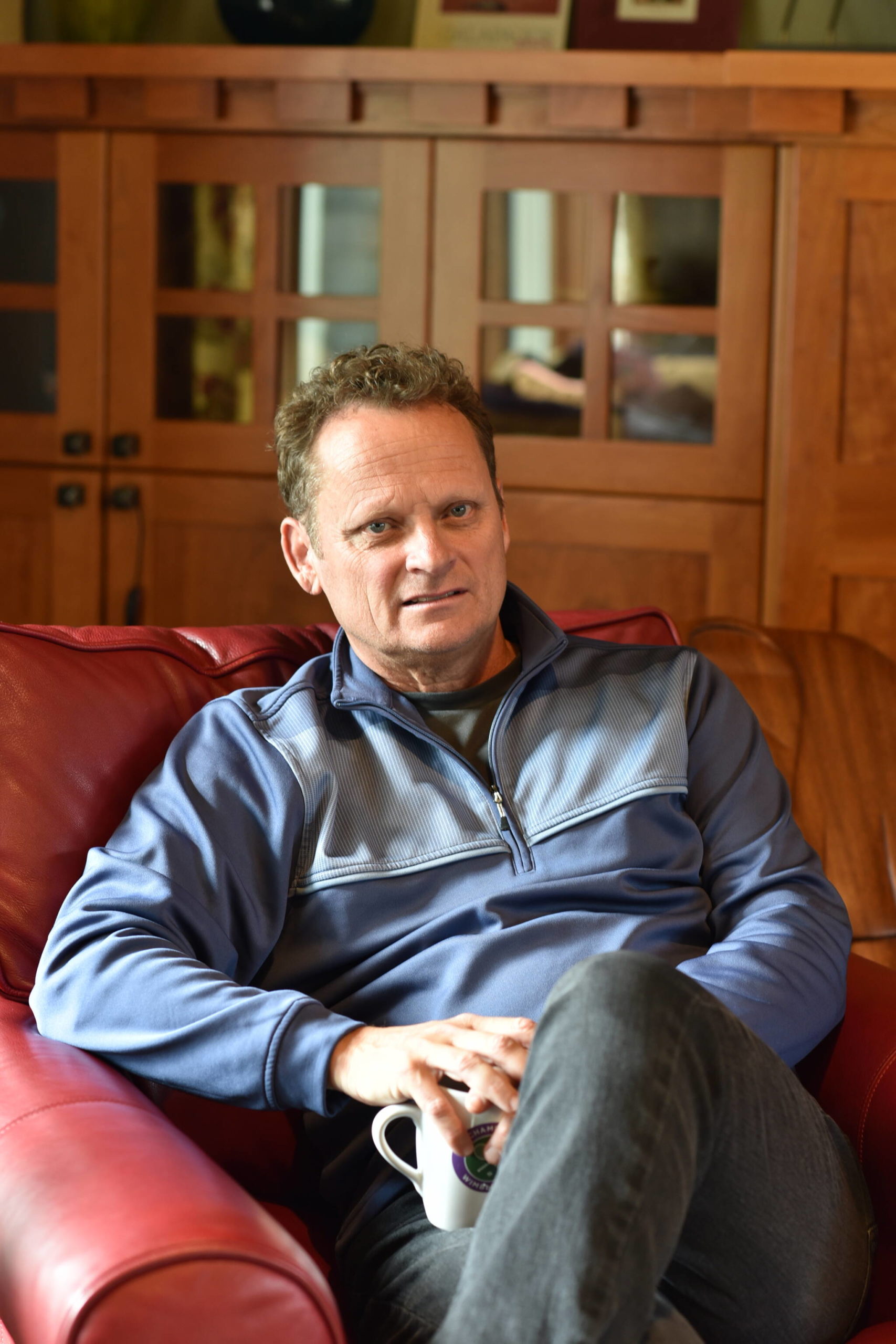In 2015, Dale Perry of Bainbridge Island started his company Energy Resources of Ukraine to provide liquefied natural gas in Ukraine to lessen its dependence on Russian energy.
In recent weeks, the U.S. and European Union made a deal to boost supplies of liquefied natural gas to European countries to reduce Europe’s dependence on Russian LNG. At a joint news conference with European Commission president Ursula von der Leyen, President Biden said, “We’re coming together to reduce Europe’s dependence on Russian energy.”
Perry doesn’t see the U.S.-EU agreement as a commercial deal, but as an ethical one. As a supplier of LNG to Europe, Perry feels that: “We’ve got to find a way to stop buying gas from Russia. Because right now, every day, millions of dollars are paid for natural gas in Europe, to Russia, for them to buy weapons to kill Ukrainians.”
For 35 years Perry has worked in the international energy industry in Kazakhstan, Ukraine, Africa, Asia, South America, Central Europe and North America. Since the Revolution of Dignity in 2014, when companies realized they could start businesses without paying bribes, he’s been transforming Ukraine’s energy sector.
Known recently for his efforts of sending humanitarian aid to refugees in Ukraine, Perry has also been fighting corruption by attempting to take away Russian President Vladimir Putin’s energy grip on Europe. “The gas sector is the most corrupt industry in the world. Because (the energy market) is so fluid and the turnover of money is at such a high rate,” Perry said.
A silver lining
As the war rages on, Perry sees a very thin silver lining of hope for Ukraine. He feels if corruption can be pushed out of the country, it can be rebuilt in a western model with real democracy and real competition in all sectors. He said nearby “Poland has no corruption, and the Ukrainian people are learning about this now. There is a very tight affinity between Polish people and Ukrainians — especially western Ukrainians. They really see themselves as kind of one of the same people.”
While Ukraine has far more natural resources, the democratic political process drove economic success in Poland. “The Catholic Church was always very strong even during their Communist days, and they still had small businesses. So, a welder could work for himself and a baker could work for themselves. It was the large businesses that were collectivized. Whereas in Russia, that was all state owned,” Perry said.
Expanding democracy in Eastern Europe threatens Putin’s Russia, he said. “His real fight has been around the self-preservation of his regime,” Perry said. “He (Putin) is afraid of what will happen if Ukraine entered the European Union. Then Ukraine would look like Poland. When the (Berlin) wall came down in 1989, Poland’s economy was one-fifth the size of Ukraine, and 30 years later, it’s exactly the opposite.”
“This is a greater story for all of Europe,” Perry said as nations move to reduce dependence on Russian gas.
Perry’s company
EU countries have been purchasing 15 billion cubic meters of LNG, or 150 ships’ worth from Russia each year. Of the 15 billion cubic meters of LNG purchased by ERU over the past five years, only 500 million cubic meters, or five ships worth, were purchased from the United States.
The logjam is that everyone will be trying to purchase U.S. LNG from a few suppliers on the Gulf Coast, Perry said, adding it is a big shell-game. He said shifting LNG around the world while working with European leaders to end their dependence on Russian energy will have a huge impact on supply and demand.
Perry recently met with the prime minister of Moldova, whose country receives 100% of its natural gas from Russia. “In October of last year, we supplied Moldova for a day, to prove that they have options. We are in discussions with the U.S. government to have a complex deal in place, as we did in 2017 in Ukraine, in providing U.S. LNG to Moldova in a few weeks.”
Pipeline gas from Russia will continue, as Europe does not have an answer for that, yet. One may be to provide more LNG from the U.S. and Qatar. Facilities under construction in the U.S. and Canada are expected to come online in 2025. The U.S. one will be capable of delivering 21 billion cubic meters of LNG per year, the Canadian one 19 bcm. Those projects were planned for growing Asian demand.
Perry sees that deal affecting U.S. LNG prices. It will eventually see higher prices for propane on places like Bainbridge Island, but Russia will have to sell its gas elsewhere.
“In my mind, the winners are China and India,” Perry said, “Russia will become subservient to Asian shareholders/investors.” Because China and India are not participating in sanctions, Perry expects Russian LNG sold to Europe will shift to Asia. Then U.S. LNG originally earmarked for Asian markets will be diverted to Europe.
Overall, new construction of facilities in the Gulf of Mexico, along with continued development and production of natural gas, is good for the U.S. market.
“With the increase of liquefaction plants … natural gas prices in the U.S. will be closer linked to international prices. This will mean more volatility and, in the end, higher prices for domestic consumers. A Bainbridge resident will see this in some rate adjustments from PSE (Puget Sound Energy) and to the extent that propane is linked to overall energy prices, propane will rise as well.”
Fortunately, Perry said, shifts in demand for natural gas should not have an impact at the gas pump.



